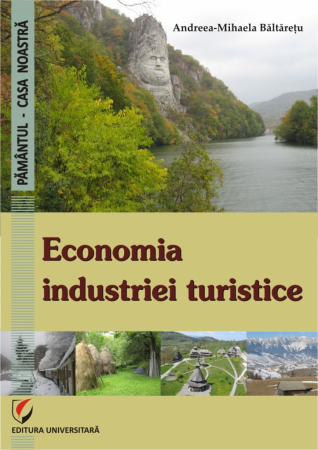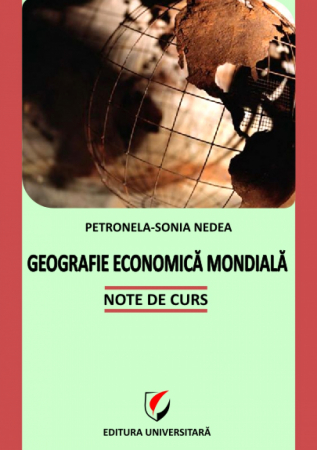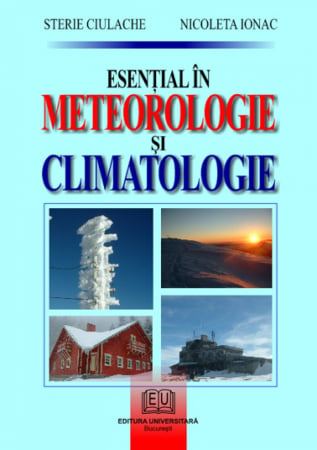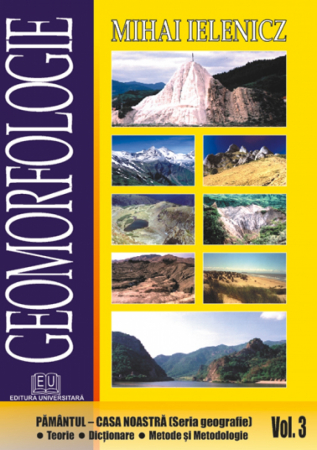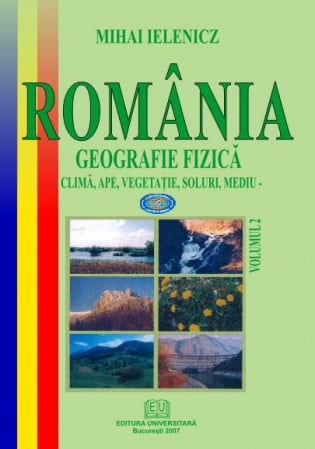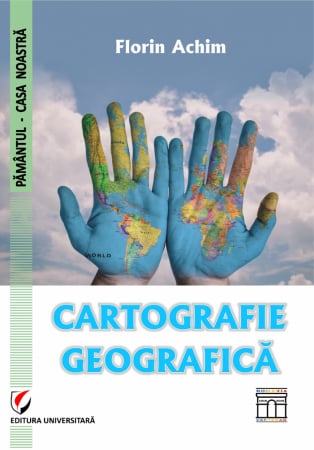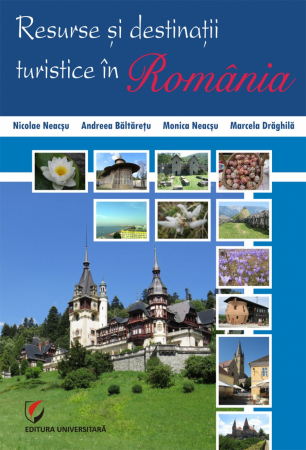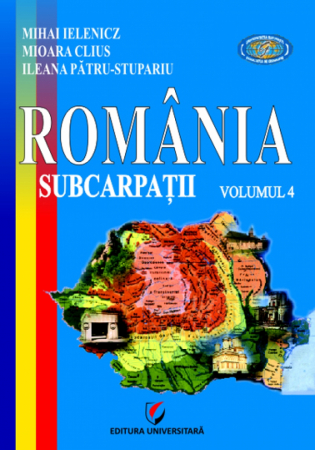Manuscript proposals: [email protected] / 0745 204 115 //// Tracking orders Individuals / Sales: 0745 200 357 / Orders Legal entities: 0721 722 783
ISBN: 978-973-749-827-4
Publisher year: 2010
Edition: I
Pages: 430
Publisher: Editura Universitară
Author: Marian Ene, Nicolae Popescu, Florina Folea Tatu
Product Code:
9789737498274
Do you need help?
0745 200 357
- Description
- Download (1)
- Authors
- Content
- More details
- Reviews (0)
The Quaternary period (according to some geologists the beginning of a new era) through what the study offers, is an extremely complex and evolving system but with a variable dynamics in time and space throughout the globe. The abundance and density of the characteristic elements make it difficult to know in detail and in totality the regime of their manifestation and the correlation of the various results. As a result, there were either unilateral conceptual approaches to the detailed study by geologists, biologists, anthropologists, hydrologists, geomorphologists, paleoclimatologists of the basic constituents that define this new course in the evolution of the Earth, or syntheses on all of them (followed in the system) but with degree different in demonstration, examples and degree of connection (reporting especially in time and magnitude) depending on the orientation of the specialist's concerns, their destination (university course, treaty, popularization, etc.) or the scientific school where it was formed and which it represents ( American, Soviet - Russian, English, Scandinavian, German, French, etc.).
In our country there are many works based mostly on research and maps that unilaterally look at the various concrete aspects of the Quaternary. Most of them concern the glacial, periglacial relief, the terraces, the meadows, the evolution of the Black Sea basin, etc., being made by geomorphologists. Equally important are the studies on Quaternary deposits (almost entirely concentrated on those in the Romanian Plain and some depressions), the evolution of fauna and flora (sporopoline analyzes) carried out by geologists and peleontologists but also some tests (even syntheses) of paleoclimatic character, mostly based on studies in the west and center of the continent. The presentation of all sides of the Quaternary problems is extremely low, whether they refer to the Romanian space, or to the continental one or to the whole Earth. Such a work is absolutely necessary not only for the training of specialists in the various directions of research of this period but especially in the correct understanding by anyone of the evolution of the natural environment in the growing interaction with the forms of pressure exerted by human society on it.
In our country there are many works based mostly on research and maps that unilaterally look at the various concrete aspects of the Quaternary. Most of them concern the glacial, periglacial relief, the terraces, the meadows, the evolution of the Black Sea basin, etc., being made by geomorphologists. Equally important are the studies on Quaternary deposits (almost entirely concentrated on those in the Romanian Plain and some depressions), the evolution of fauna and flora (sporopoline analyzes) carried out by geologists and peleontologists but also some tests (even syntheses) of paleoclimatic character, mostly based on studies in the west and center of the continent. The presentation of all sides of the Quaternary problems is extremely low, whether they refer to the Romanian space, or to the continental one or to the whole Earth. Such a work is absolutely necessary not only for the training of specialists in the various directions of research of this period but especially in the correct understanding by anyone of the evolution of the natural environment in the growing interaction with the forms of pressure exerted by human society on it.
-
Quaternary Geography
Download
NICOLAE POPESCU

MARIAN ENE
Assoc. Dr. Marian Ene graduated the Department of Geography, University of Bucharest, in 1996, when he started his academic career.
He graduated in 1997 Masters within the same institution.
In 2004 she obtained a PhD in Geography with his "Sub-Carpathian Basin of Râmnicu Sarat. Dynamic of present geomorphological processes implications of the use of land ", published in 2005, by Editura Universitara under the title" Râmnicu Sarat Basin. Landscape dynamics insub-Carpathian mountain sectors ".
He has published 15 books alone or with others, dictionaries, atlases and maps, 52 articles and over 150 scientific articles and popular maps.
He has participated in over 60 national and international scientific meetings (France, Britain, Turkey, Italy, Greece, Egypt).
FLORINA FOLEA TATU
She attended and graduated from University College Mapping (Department of Geography ) between 1993-1996 , Faculty of Geography, Geomorphology, Soil Science Specialization (University of Bucharest) 1994-1998; Master studies - Geography, Geomorphology dynamic specialization environmental land (1998-1999), doctoral studies at the Faculty of Geography, University of Bucharest under the guidance of Prof. Nicolae Popescu and Prof. Michael Ielenicz , in 2007 became Doctor of Natural Sciences , Area - Geography (Thesis title - "Glacis piedmont of Putna and Trotus . Geomorphological study") . In 2006 she attended a specialization in Project Management Research - Development (Academy of Economic Studies), and in 2011-2012 completed the teacher training program - Developing specific skills designing and implementing training programs in technology distance education (MECTS - Project Management Unit External Financing).
Since 2000 professor at the Faculty of Geography, Department of Geomorphology, Soil Science, Geomatics, University of Bucharest (2000-2002 - Assistant, 2002-2007 - Assistant, 2007 - present - Lecturer). Courses taught: physical- geographical mapping, drawing, writing mapping technique, tourist regions of Earth, Romanian Relief, relief Earth; systems and graphical map representations of the territory, and research methodology and soil geomorphological mapping, Geomorphology, Physical Geography of Romania; climatic Geomorphology.
Geomorphology is a member of the Association of Romania in 1998 the Society of Geography in Romania since 1998, member of the management team of the Faculty of Geography for Distance Learning - 1999, Member of the Board of the Faculty of Geography in 2008.
She has published as author and co-author books, scientific articles, maps, popular, practice guidelines, in total 33 appearances.
She participated in 16 international scientific conferences, 26 national scientific meetings, participated in the organizing committee of seven national and international symposia and 9 was part of research teams in 7 research projects. In the period 2010-2012 was Project Director University of Bucharest partner 7 in - POSDRU/57/1.3/S/32629 Operational Programme Human Resources Development 2007-2013 , Key Area of Intervention 1.3 " Developing human resources in education and training " Title: " Training of teachers in school education to career development opportunities."

MARIAN ENE
Assoc. Dr. Marian Ene graduated the Department of Geography, University of Bucharest, in 1996, when he started his academic career.
He graduated in 1997 Masters within the same institution.
In 2004 she obtained a PhD in Geography with his "Sub-Carpathian Basin of Râmnicu Sarat. Dynamic of present geomorphological processes implications of the use of land ", published in 2005, by Editura Universitara under the title" Râmnicu Sarat Basin. Landscape dynamics insub-Carpathian mountain sectors ".
He has published 15 books alone or with others, dictionaries, atlases and maps, 52 articles and over 150 scientific articles and popular maps.
He has participated in over 60 national and international scientific meetings (France, Britain, Turkey, Italy, Greece, Egypt).
FLORINA FOLEA TATU
She attended and graduated from University College Mapping (Department of Geography ) between 1993-1996 , Faculty of Geography, Geomorphology, Soil Science Specialization (University of Bucharest) 1994-1998; Master studies - Geography, Geomorphology dynamic specialization environmental land (1998-1999), doctoral studies at the Faculty of Geography, University of Bucharest under the guidance of Prof. Nicolae Popescu and Prof. Michael Ielenicz , in 2007 became Doctor of Natural Sciences , Area - Geography (Thesis title - "Glacis piedmont of Putna and Trotus . Geomorphological study") . In 2006 she attended a specialization in Project Management Research - Development (Academy of Economic Studies), and in 2011-2012 completed the teacher training program - Developing specific skills designing and implementing training programs in technology distance education (MECTS - Project Management Unit External Financing).
Since 2000 professor at the Faculty of Geography, Department of Geomorphology, Soil Science, Geomatics, University of Bucharest (2000-2002 - Assistant, 2002-2007 - Assistant, 2007 - present - Lecturer). Courses taught: physical- geographical mapping, drawing, writing mapping technique, tourist regions of Earth, Romanian Relief, relief Earth; systems and graphical map representations of the territory, and research methodology and soil geomorphological mapping, Geomorphology, Physical Geography of Romania; climatic Geomorphology.
Geomorphology is a member of the Association of Romania in 1998 the Society of Geography in Romania since 1998, member of the management team of the Faculty of Geography for Distance Learning - 1999, Member of the Board of the Faculty of Geography in 2008.
She has published as author and co-author books, scientific articles, maps, popular, practice guidelines, in total 33 appearances.
She participated in 16 international scientific conferences, 26 national scientific meetings, participated in the organizing committee of seven national and international symposia and 9 was part of research teams in 7 research projects. In the period 2010-2012 was Project Director University of Bucharest partner 7 in - POSDRU/57/1.3/S/32629 Operational Programme Human Resources Development 2007-2013 , Key Area of Intervention 1.3 " Developing human resources in education and training " Title: " Training of teachers in school education to career development opportunities."
A NEED / 3
PART I - GENERAL ELEMENTS
Chapter 1 TEMPORAL AND STRUCTURAL DEFINITION OF ROLL QUATERN / 9
1.1. The main events during the Quaternary and their importance in the structural and regional definition of the current geographical space / 9
1.2. The place of the Quaternary in the geochronological scale. Limits and subdivisions / 11
Chapter 2 QUATERNARY PALEOMEDIUM RESEARCH METHODS / 23
Chapter 3 THE EVOLUTION OF THE NATURAL ENVIRONMENT UNTIL THE NARRO CUATER THRESHOLD / 36
3.1. Precambrian - the time of consolidation of the Earth and the appearance of life / 36
3.2. Paleozoic - era of lush forests of tree ferns / 38
3.3. Mesozoic - the era of giant reptiles and the drift of continental plates / 41
3.4. Neozoic - the era of mammals and the appearance of hominids / 47
PART II - THE NATURAL ENVIRONMENT IN THE QUATERNARY
Chapter 4 MAIN CLIMATE CHARACTERISTICS OF THE PLEISTOCENE / 61
4.1. Neogene - the climate transition period / 61
4.2. Pleistocene climate. Morphoclimatic determinations / 66
4.2.1. Climatic peculiarities of extratropical regions / 68
4.2.2. Morphoclimatic determinations in periglacial regions / 80
4.2.3. Climatic peculiarities in intertropical regions / 92
4.2.4. Morphoclimatic determinations in intertropical areas / 96
Chapter 5 CLIMATE COOLING AND QUATERNARY GLACIATION, QUATERNARY PERIOD PHENOMENA / 109
5.1. General dynamics of the landscape / 109
5.2. More important data in the knowledge of glaciers and Quaternary glaciation / 111
5.3. Causes of climate cooling and Quaternary glaciation / 113
5.3.1. Terrestrial causes / 117
5.3.2. Extraterrestrial causes / 126
Chapter 6 FORMATION, ICE DYNAMICS AND CREATED RELIEF / 134
6.1. Ice formation / 134
6.2. Classification of glaciers / 136
6.3. The movement of glaciers / 140
6.4. Glacial balance / 140
6.5. The relief created by glaciers / 143
Chapter 7 CAP GLACIATION AND MONTANA GLACIATION EXTENSION OF QUATERNARY GLACIERS / 148
7.1. Cap and mountain glaciation in Europe / 148
7.1.1. Formation of the northern European cap / 150
7.1.2. Glacial and interglacial phases in Northern Europe / 154
7.1.3. Formation and evolution of the Baltic Sea / 171
7.1.4. The evolution of mountain glacial systems in Europe / 173
7.2. North American cap and mountain glaciation / 197
7.2.1. Formation of North American caps / 198
7.2.2. Glacial and interglacial phases in North America / 202
7.2.3. Evolution of glacial systems in western North America in late Wisconsin / 227
7.3. Cap and mountain glaciation in Asia / 239
7.3.1. Mountain glaciation in Central Asia / 248
7.3.2. Quaternary glaciation in the mountains of West and Southwest Asia / 256
7.3.3. Glaciation of mountainous regions in Southeast Asia / 257
7.4. Pleistocene glaciation in Australia, New Zealand and Tasmania / 260
7.5. Mountain and cap glaciation in South America / 261
7.6. The glaciation in Africa / 264
7.7. Glaciation in the Antarctic and Subantarctic Islands / 265
7.8. Quaternary glaciation in Antarctica and Greenland / 266
Chapter 8 VEGETATION EVOLUTION / 272
8.1. Pliocene - Quaternary transition reflected in vegetation / 276
8.2. Vegetation from the middle and upper Pleistocene / 281
8.3. Vegetation in Europe during the Late Glacier and the beginning of the Holocene / 299
8.4. Vegetation in Europe during the last glacier and the beginning of the Holocene / 304
8.5. Vegetation of the southern continents during the last glacier and the beginning of the Holocene / 309
Chapter 9 THE EVOLUTION OF THE LARGE MAMMAL FAUNA / 315
9.1. Evolution of the main groups of large mammals / 317
9.2. Successions of mammalian fauna in Eurasia during the Pleistocene / 323
Chapter 10 THE EVOLUTION OF MAN / 333
10.1 The first primates / 341
10.2 The first anthropoid primates / 343
10.3 Australopithecus / 350
10.4 Possible phyletic relationships between australopithecines and Homo / 359
10.5 The first people / 364
10.6 Homo sapiens / 379
10.7 Origin and spread of Homo sapiens sapiens populations / 402
PART I - GENERAL ELEMENTS
Chapter 1 TEMPORAL AND STRUCTURAL DEFINITION OF ROLL QUATERN / 9
1.1. The main events during the Quaternary and their importance in the structural and regional definition of the current geographical space / 9
1.2. The place of the Quaternary in the geochronological scale. Limits and subdivisions / 11
Chapter 2 QUATERNARY PALEOMEDIUM RESEARCH METHODS / 23
Chapter 3 THE EVOLUTION OF THE NATURAL ENVIRONMENT UNTIL THE NARRO CUATER THRESHOLD / 36
3.1. Precambrian - the time of consolidation of the Earth and the appearance of life / 36
3.2. Paleozoic - era of lush forests of tree ferns / 38
3.3. Mesozoic - the era of giant reptiles and the drift of continental plates / 41
3.4. Neozoic - the era of mammals and the appearance of hominids / 47
PART II - THE NATURAL ENVIRONMENT IN THE QUATERNARY
Chapter 4 MAIN CLIMATE CHARACTERISTICS OF THE PLEISTOCENE / 61
4.1. Neogene - the climate transition period / 61
4.2. Pleistocene climate. Morphoclimatic determinations / 66
4.2.1. Climatic peculiarities of extratropical regions / 68
4.2.2. Morphoclimatic determinations in periglacial regions / 80
4.2.3. Climatic peculiarities in intertropical regions / 92
4.2.4. Morphoclimatic determinations in intertropical areas / 96
Chapter 5 CLIMATE COOLING AND QUATERNARY GLACIATION, QUATERNARY PERIOD PHENOMENA / 109
5.1. General dynamics of the landscape / 109
5.2. More important data in the knowledge of glaciers and Quaternary glaciation / 111
5.3. Causes of climate cooling and Quaternary glaciation / 113
5.3.1. Terrestrial causes / 117
5.3.2. Extraterrestrial causes / 126
Chapter 6 FORMATION, ICE DYNAMICS AND CREATED RELIEF / 134
6.1. Ice formation / 134
6.2. Classification of glaciers / 136
6.3. The movement of glaciers / 140
6.4. Glacial balance / 140
6.5. The relief created by glaciers / 143
Chapter 7 CAP GLACIATION AND MONTANA GLACIATION EXTENSION OF QUATERNARY GLACIERS / 148
7.1. Cap and mountain glaciation in Europe / 148
7.1.1. Formation of the northern European cap / 150
7.1.2. Glacial and interglacial phases in Northern Europe / 154
7.1.3. Formation and evolution of the Baltic Sea / 171
7.1.4. The evolution of mountain glacial systems in Europe / 173
7.2. North American cap and mountain glaciation / 197
7.2.1. Formation of North American caps / 198
7.2.2. Glacial and interglacial phases in North America / 202
7.2.3. Evolution of glacial systems in western North America in late Wisconsin / 227
7.3. Cap and mountain glaciation in Asia / 239
7.3.1. Mountain glaciation in Central Asia / 248
7.3.2. Quaternary glaciation in the mountains of West and Southwest Asia / 256
7.3.3. Glaciation of mountainous regions in Southeast Asia / 257
7.4. Pleistocene glaciation in Australia, New Zealand and Tasmania / 260
7.5. Mountain and cap glaciation in South America / 261
7.6. The glaciation in Africa / 264
7.7. Glaciation in the Antarctic and Subantarctic Islands / 265
7.8. Quaternary glaciation in Antarctica and Greenland / 266
Chapter 8 VEGETATION EVOLUTION / 272
8.1. Pliocene - Quaternary transition reflected in vegetation / 276
8.2. Vegetation from the middle and upper Pleistocene / 281
8.3. Vegetation in Europe during the Late Glacier and the beginning of the Holocene / 299
8.4. Vegetation in Europe during the last glacier and the beginning of the Holocene / 304
8.5. Vegetation of the southern continents during the last glacier and the beginning of the Holocene / 309
Chapter 9 THE EVOLUTION OF THE LARGE MAMMAL FAUNA / 315
9.1. Evolution of the main groups of large mammals / 317
9.2. Successions of mammalian fauna in Eurasia during the Pleistocene / 323
Chapter 10 THE EVOLUTION OF MAN / 333
10.1 The first primates / 341
10.2 The first anthropoid primates / 343
10.3 Australopithecus / 350
10.4 Possible phyletic relationships between australopithecines and Homo / 359
10.5 The first people / 364
10.6 Homo sapiens / 379
10.7 Origin and spread of Homo sapiens sapiens populations / 402
This paper is absolutely necessary for geographers, students from different profiles of the Faculty of Geography and from all forms of education (day, FR, ID) that decipher some of the secrets of physical geography. It is based on the work General Geography - Physical Geography, published in the Romania of Tomorrow Foundation Publishing House in 2000, author prof.univ.dr. Mihai Ielenicz, but also many other treatises and university courses, including Simion Mehedinti's "Terra". The structure of the paper follows the most important issues that must be presented and explained in such a paper, namely: Object, History, Methods and Laws of Geography, Universe, Earth and its place in the Universe, Terrestrial Geospheres, Great natural-geographical systems. Each of the 5 major problems mentioned above are performed in accordance with the analytical program of this discipline, related to the number of hours provided in the curriculum. As a result, a logical chaining of the basic issue was considered, starting from the general to the particular.
At the end of the five sections there are some practical works from this study discipline, in which are presented the notions of geographical methodology that must be mastered, at this stage, in this course.
As a result, what is the purpose of this paper?
• to solve the essential requirements of this science: understanding the geographical system (limits, composition, structure, functionality, laws) and knowing the set of relationships that it has acquired over time with other systems;
• to ensure the theoretical understanding (basic notions, laws, methods, relations) and the knowledge of the spatial and temporal evolution of the geographical system and of the component subsystems;
• to highlight the main necessary notions about the Universe and the place of the Earth within it;
• to lead to the understanding of the functional and structural relations that exist between the terrestrial geospheres that materialize in the great natural-geographical systems;
• to select from the multitude of notions of this discipline but also of the basic courses that the students follow the most important ones that outline the connections and the interaction between the components of the geographical environment, avoiding as much as possible the overlaps.
Starting from the previous experience of the authors, each study module has a didactic structure, being formulated the objectives to be achieved after reading the material, being presented exercises, verification questions, dictionary of terms and finally a basic bibliography.
The dictionary of geographical terms aims to explain the most important and usual notions that must be mastered, the realization of a geographical vocabulary being one of the primary desideratum of a general geography course.
The questions at the end of each module cover the most important aspects, are different as types of items and aim to achieve permanent self-assessment out of the desire for the student to know permanently where he is on the training ladder.
I tried that this paper be accompanied by a carefully chosen illustrative material that is explanatory, convinced of its power of suggestion and its importance in geographical demonstrations.
The final goal of our paper is on the one hand to be a useful tool for first year students from all forms of education, to master the most important and complex notions of physical geography, of the natural geographical envelope in its structural unity. and functional, and on the other hand to acquire a logical way of thinking that can help him in analyzes and formulations.
That is why we want this book to be for the geography students like an Alphabet, because the Alphabet remains well imprinted in our minds all our lives.
The Authors
At the end of the five sections there are some practical works from this study discipline, in which are presented the notions of geographical methodology that must be mastered, at this stage, in this course.
As a result, what is the purpose of this paper?
• to solve the essential requirements of this science: understanding the geographical system (limits, composition, structure, functionality, laws) and knowing the set of relationships that it has acquired over time with other systems;
• to ensure the theoretical understanding (basic notions, laws, methods, relations) and the knowledge of the spatial and temporal evolution of the geographical system and of the component subsystems;
• to highlight the main necessary notions about the Universe and the place of the Earth within it;
• to lead to the understanding of the functional and structural relations that exist between the terrestrial geospheres that materialize in the great natural-geographical systems;
• to select from the multitude of notions of this discipline but also of the basic courses that the students follow the most important ones that outline the connections and the interaction between the components of the geographical environment, avoiding as much as possible the overlaps.
Starting from the previous experience of the authors, each study module has a didactic structure, being formulated the objectives to be achieved after reading the material, being presented exercises, verification questions, dictionary of terms and finally a basic bibliography.
The dictionary of geographical terms aims to explain the most important and usual notions that must be mastered, the realization of a geographical vocabulary being one of the primary desideratum of a general geography course.
The questions at the end of each module cover the most important aspects, are different as types of items and aim to achieve permanent self-assessment out of the desire for the student to know permanently where he is on the training ladder.
I tried that this paper be accompanied by a carefully chosen illustrative material that is explanatory, convinced of its power of suggestion and its importance in geographical demonstrations.
The final goal of our paper is on the one hand to be a useful tool for first year students from all forms of education, to master the most important and complex notions of physical geography, of the natural geographical envelope in its structural unity. and functional, and on the other hand to acquire a logical way of thinking that can help him in analyzes and formulations.
That is why we want this book to be for the geography students like an Alphabet, because the Alphabet remains well imprinted in our minds all our lives.
The Authors
If you want to express your opinion about this product you can add a review.
write a review

6359.png)
![Quaternary Geography [1] Quaternary Geography [1]](https://gomagcdn.ro/domains/editurauniversitara.ro/files/product/large/quaternary-geography-2338-2432.jpg)

